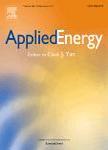版权所有:内蒙古大学图书馆 技术提供:维普资讯• 智图
内蒙古自治区呼和浩特市赛罕区大学西街235号 邮编: 010021

作者机构:Southeast Univ Sch Architecture Nanjing 210018 Jiangsu Peoples R China Lawrence Berkeley Natl Lab Bldg Technol & Urban Syst Div Cyclotron Roach Berkeley CA 94720 USA Tsinghua Univ Dept Construct Management Beijing 100084 Peoples R China Northeastern Univ Dept Civil & Environm Engn 433 SN360 Huntington Ave Boston MA 02115 USA City Univ Hong Kong Dept Architecture & Civil Engn Kowloon Y6621AC1Tat Chee Ave Hong Kong Peoples R China
出 版 物:《APPLIED ENERGY》 (实用能源)
年 卷 期:2019年第236卷
页 面:55-69页
核心收录:
学科分类:0820[工学-石油与天然气工程] 0817[工学-化学工程与技术] 08[工学] 0807[工学-动力工程及工程热物理]
基 金:Hong Kong General Research Fund (GRF) - Early Career Scheme National Natural Science Foundation of China (NSFC)
主 题:Energy-cyber-physical systems Building occupancy Wi-Fi probe technology Ensemble algorithm
摘 要:With the rapid advances in sensing and digital technologies, cyber-physical systems are regarded as the most viable platforms for improving building design and management. Researchers investigated the possibility of integrating energy management systems with cyber-physical systems to form energy-cyber-physical systems in order to promote building energy management. However, minimizing energy consumption while fulfilling building functions for energy-cyber-physical systems is challenging due to the dynamics of building occupants. As occupant behavior is a major source of uncertainty for energy management, ignoring it often results in both energy waste caused by overheating and overcooling as well as discomfort due to insufficient thermal and ventilation services. To mitigate such uncertainties, this study proposes an occupancy-linked energy-cyber-physical system that incorporates WiFi probe-based occupancy detection. The proposed framework utilizes ensemble classification algorithms to extract three forms of occupancy information. It creates a data interface to link energy management systems and cyber-physical systems and allows for automated occupancy detection and interpretation by assembling multiple weak classifiers for WiFi signals. A validation experiment in a large office room was conducted to examine the performance of the proposed occupancy-linked energy-cyber-physical systems. The experiment and simulation results suggest that, with a proper classifier and occupancy data type, the proposed model can potentially save about 26.4% of energy consumption in cooling and ventilation demands.